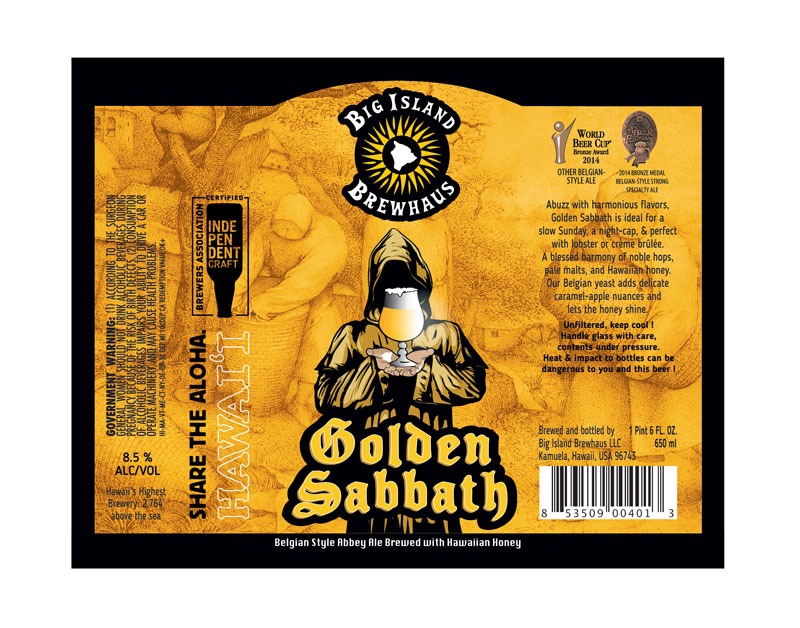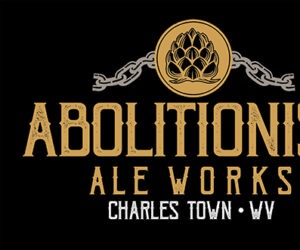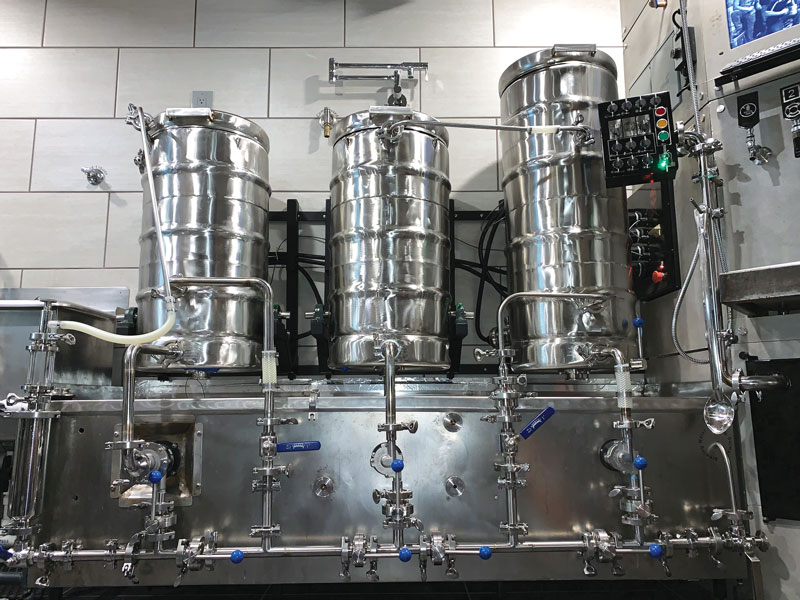Big Island Brewhaus
Dear Replicator,
My wife and I are finally empty nesters and we decided to celebrate by taking a trip to Hawaii to do some island hopping for a month since neither of us have ever been there. We found the Big Island to be so facinating both geologically, ecologically . . . and we discovered an amazing brewery! While in Waimea we stumbled on Big Island Brewhaus, which provided not only great beer, but also great food. I loved the balance found in the Golden Sabbath most of all. Would love to replicate this one back at home and reminisce about the trip with my wife.
Ken Greenberg
Encinitas, California
Named after the Hawaiian island where it resides, Big Island
Brewhaus features an array of styles. Thomas Kerns, both Co-Owner and Brewmaster at Big Island, has had the “golden” opportunity to travel and experience various brewing regions around the world. Kerns has channeled that knowledge into his beers, which reflect Kerns’ European travels. Traditional American craft staples such as IPA, pale ale, and nut brown headline their tap list, while European styles such as lagers, Gose, Baltic porter, and an assortment of Belgian-style offerings round out the lineup. Among these are grisette, dark strong, and this article’s featured beer: Golden Sabbath, a Belgian-style abbey ale.

Kerns and his wife, Jayne, have built their brewery centered around the Hawaiian term ohana, which means “family.” The Kerns’ have created a family atmosphere that drives everything they do at Big Island Brewhaus.
Kerns’ beer journey started during his travels to Europe and escalated as he began to homebrew. “I became inspired by what beer is and how regional it seemed,” said Kerns. “That, coupled with my love of food and the way the flavors of food and beer interact with each other — it’s become a lifelong passion.”
After studying history and music at Portland State University, Kerns searched for a brewing job. Hired by McMenamin’s of Oregon in 1993, Kerns started at the bottom. He understood he could learn everything about professional brewing from the ground up. Kerns spent three years with McMenamin’s, eventually running several of their breweries.
From there, Kerns was hired to open a brewery in the Philippines in 1995. He left McMenamin’s, moved to Manila where he designed, set up, and opened a brewery. “It was a great opportunity to do it on my own,” said Kerns.
After successfully launching the brewery in the Philippines, Kerns returned to Maui, Hawaii where he once lived, to join forces with a restaurateur who was looking to create and open a brewpub. Fish and Games Brewing Company officially opened in 1998. Kerns ran the brewery through 2005 when the company was purchased by Garrett Marrero. Kerns and Marrero worked together for three years building the brand, which became known as Maui Brewing Company under Marrero’s ownership. Having successfully run or launched breweries for several different companies, it was time for Kerns to do it on his own.
Tom and Jayne Kerns’ vision came to life on March 4, 2011 when Big Island Brewhaus served its first beers, Paniolo Pale Ale and Malama Helles Lager. Besides the idyllic setting, brewing in Hawaii has its advantages.
“Brewing in Hawaii creates a natural isolation, which is good for our business and our culture,” said Kerns. “Being on an island, all the different flavors that come with Hawaii and Hawaiian cuisine make their way into the scene, onto the table, and into the beer.”
The goal in all of Kerns’ beers is to create harmony, where all the ingredients work together to create a wonderful aromatic and flavor experience. That harmony is especially evident in Golden Sabbath, their Belgian-style abbey ale.
Besides the obvious connotation to monk brewers and/or the band Black Sabbath, Kerns’ inspiration for the name actually came during a beer judging with a renowned Belgian brewer at the World Beer Cup in 2010.
“I was judging Belgian beers with Hildegard van Ostaden, a renowned brewer from Belgium’s Urthel Brewery,” said Kerns. “She spoke fondly of ‘Sabbath’ beers; strong, rich ales that were often savored on Sunday afternoons, to thoroughly enjoy the Sabbath.”
Stylistically, Golden Sabbath can be considered a slightly fuller-bodied Belgian golden strong ale. The use of local Hawaiian honey in place of traditional Belgian candi sugar provides body, a silky texture, and an inviting aroma.
Hopped with a blend of European and subtle American hops, this drinkable beer packs a punch at 8.5% ABV. It has also shown its strength during competition as a three-time medalist at the U.S. Open Beer Championships in addition to winning medals at both the World Beer Cup and the Great American Beer Festival in 2014.
Munich malt provides a subtle toasty character while the 45 IBUs and the effervescent carbonation adds to the beer’s character, providing a crisp, clean finish. Golden Sabbath pairs exquisitely with seafood dishes, especially fresh fish, lobster, and crab. The yeast adds a unique, yet restrained, caramel-apple nuance, which lets the honey shine through.
Now you can take a virtual Hawaiian vacation by brewing your own version of Golden Sabbath. Listening to Ozzy while doing so is entirely optional, but strongly encouraged.
Big Island Brewhaus’ Golden Sabbath clone

(5 gallons/19 L, all-grain)
OG = 1.074 FG = 1.009
IBU = 45 SRM = 7 ABV = 8.5%
INGREDIENTS
11 lbs. (5 kg) North American 2-row pale malt
2 lbs. (0.91 kg) Great Western Munich malt (10 °L)
0.5 lb. (227 g) Simpsons caramalt (15 °L)
1 lb. (0.45 kg) macadamia nut honey or mesquite honey
0.42 lb. (190 g) cane sugar
7.15 AAU Galena hops (90 min.) (0.55 oz./16 g at 13% alpha acids)
4.5 AAU Hallertau Mittelfrüh hops (30 min.) (1 oz./28 g at 4.5% alpha acids)
4 AAU Tettnanger hops (0 min.) (1 oz./28 g at 4% alpha acids)
White Labs WLP570 (Belgian Golden Ale), Wyeast 1388 (Belgian Strong Ale), Imperial Yeast B51 (Workhorse), or Mangrove Jack’s M31 (Belgian Tripel) yeast
¾ cup corn sugar (if priming)
STEP BY STEP
Employing a single infusion mash, target a mash temperature of 152 °F (67 °C), rest for 60 minutes or until conversion is complete. Recirculate until clear, then collect wort and boil for 90 minutes. Add first hop addition when boil is achieved, second addition with 30 minutes remaining, sugar with 15 minutes to go, and final hop addition and honey after heat has been turned off. Adding honey during whirlpool helps to retain much of its valued aroma. Give the wort a long stir to create a whirlpool, then let settle for 20 minutes before beginning to chill the wort.
Chill wort to 68 °F (20 °C), pitch yeast, and oxygenate. A big beer like this can take 12–15 days to finish primary fermentation. Maintain a temperature of 68 °F (20 °C) to help maintain a restrained ester profile, while still imparting an overall positive yeast character.
Big Island Brewhaus’ Golden Sabbath clone
(5 gallons/19 L, extract with grains)
OG = 1.074 FG = 1.009
IBU = 45 SRM = 8 ABV = 8.5%
INGREDIENTS
5.8 lbs. (2.6 kg) light or golden light dried malt extract
1 lb. (0.45 kg) Munich dried malt extract
0.5 lb. (227 g) Simpsons caramalt (15 °L)
1 lb. (0.45 kg) macadamia nut honey or mesquite honey
0.42 lb. (190 g) cane sugar
7.15 AAU Galena hops (90 min.) (0.55 oz./16 g at 13% alpha acids)
4.5 AAU Hallertau Mittelfrüh hops (30 min.) (1 oz./28 g at 4.5% alpha acids)
4 AAU Tettnanger hops (0 min.) (1 oz./28 g at 4% alpha acids)
White Labs WLP570 (Belgian Golden Ale), Wyeast 1388 (Belgian Strong Ale), Imperial Yeast B51 (Workhorse), or Mangrove Jack’s M31 (Belgian Tripel) yeast
¾ cup corn sugar (if priming)
STEP BY STEP
Raise 2 gallons (7.6 L) of water to about 152 °F (67 °C) and steep only the caramalt (in a muslin bag) for about 10 minutes. Remove grain, letting the liquid drip back into the pot without squeezing. Remove malt and raise temperature to near boiling. When close, remove from heat source and slowly stir in the dried malt extract, ensuring it is fully dissolved. Place back onto heat source and raise to a boil. Add first hop addition when boil is achieved, second addition with 30 minutes remaining, sugar with 15 minutes to go, and final hop addition in whirlpool. Add honey during whirlpool to get a thorough blend, while retaining much of its aroma.
After a 20-minute kettle rest, chill wort to 68 °F (20 °C) and top up with pre-boiled and chilled water to achieve a total of 5 gallons (19 L). Pitch yeast, and oxygenate. A big beer like this can take 12–15 days to finish primary fermentation. Maintain a temperature of 68 °F (20 °C) to help restrain the ester profile, but still impart positive yeast character.
Tips For Success:
The goal for Golden Sabbath is to achieve a dry finish while showing light honey/caramel/apple nuances with a floral citrus hop accent. According to Kerns, specific malts make all the difference when trying to recreate this beer.
“I recommend a good 2-row to give a solid backbone instead of using a lighter-bodied Pilsner malt,” said Kerns. “Also, I recommend using the Great Western Munich for this beer over the European varieties of Munich malt. Great Western imparts more of a dry-toasty character versus the malt sweetness you get from typical German varieties of Munich malt.”
The honey you select will be a key part in developing the final nose and flavor of the beer. But sourcing the nutty tasting macadamia nut honey isn’t going to be easy (or cheap) since the Big Island is the main production site of this honey. Mesquite honey from the desert southwestern U.S. is a good alternative with its light molasses character.
Dextrose can be used instead of cane sugar and Citra® hops can be used in place of Galena; brewer’s choice. The sugar or dextrose is used to lighten the body of the beer while adding fermentables. Your SRM may differ from the recipe (can range from 7–12), depending on the type of honey used and/or employing different maltsters for the grain bill.



